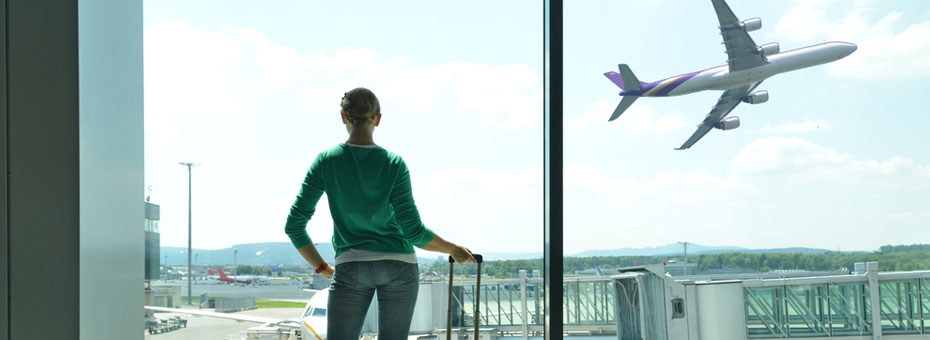Air travel drives me crazy.
I do a lot of traveling for work, and I’ll be traveling more for the holidays, too. I know the routine pretty well. I pull up my Delta app to retrieve my boarding pass and most of the time I fly out of the nearer half of gate A at Logan so I don’t have too much walking to do. Then, like other travelers, I stand in the security line and become a number.
In a manufacturing line, you can usually see the bottleneck where inventory is stacked up. But at the airport, the “inventory” is people. Though some people are on the same flights, a variety of flights run through gate A with varying departure times. Still, for some reason we’re all in line at the same time. I see two clear points of stacked inventory: 1) where TSA agents check your boarding pass against your ID and 2) the dreaded body scanner.
In attempts to train the customer (the traveler) how to use the product (the scanner), guidelines are posted on the internet and on a TV screen behind TSA staff. We’re reminded to remove our laptops, discard liquids over 3 oz., take off our shoes and belts, etc. Yet, when it’s time to follow the rules and put our belongings in a bin on the conveyer belt, I notice few of us do these things. To me, the bins are cumbersome, and putting my laptop in a separate bin seems like a waste of space and effort. Why not just put it on the conveyor? But, if we’re doing things in the name of safety and regulatory compliance, I put this aside and place my laptop in the bin.
Next, after I push my belongings through the scanner, I meticulously check my pockets to make sure I’m not “that guy” who holds up the line because I accidentally forgot to put something on the conveyor. I look over to see an idle machine to my left while 30 people are waiting in line behind me and even more travelers wait in other open lanes. I wonder how Logan airport staffs their TSA agents… Based on some historic data, it wouldn’t be too hard to staff to demand, right? I imagine there are things that could happen that would affect the staffing plan, like weather. But for the most part staffing to demand seems like it could ease the amount of hassle travelers have to go through and optimize work time for TSA agents.
As I’m a believer of just-in-time everything, I’m usually the last one on the plane when I travel. I step aboard and miss the first class (lots of miles), first half of the plane, and second half of the plane boarding shenanigans. Since most airlines now charge checked bag fees, I notice there are more carry-on bags these days. Overhead space doesn’t seem well equipped for capacity storage. If I ruled the world (save us all) and could dictate how the plane would be boarded, I’d do so with efficiency in mind. Let’s board the back of the plane first, starting with window seats. Next, the back half of the middle seats, and then the back half of the aisle seats. Repeat for the front the plane. Better yet, why not run some experiments to see what works best for each carrier?
My guess is that as you’re reading this you’re probably imagining all the ways you might improve air travel processes, too (or think the airport and airlines should improve their processes). We all think we can improve the air travel process. That’s what’s so great about lean thinking: anyone and everyone can be a problem solver.
Of course Lean is about more than just maximizing efficiency though; it’s about bettering the work and working with the people who actually do the work to develop their capabilities for doing the work. For the airport and airline companies, it’s not just one team that should be thinking about how to make improvements either; all aspects of these businesses need to be examined. Part of why so many organizations struggle is just the sheer number of stakeholders involved. It’s hard to work together, collaborate, and make things better for the customer.
Nevertheless (and whether or not the airlines can figure this air travel thing out this Christmas), I challenge you to do exactly this with your work: look for waste, get a handle on your standards (or lack thereof), collaborate with each other, and think about ways you can improve the customer experience. Examining, observing, and mapping out a problematic process will show you all kinds of things to work on. Starting small while thinking big is a key mindset for change, and it starts with you.





